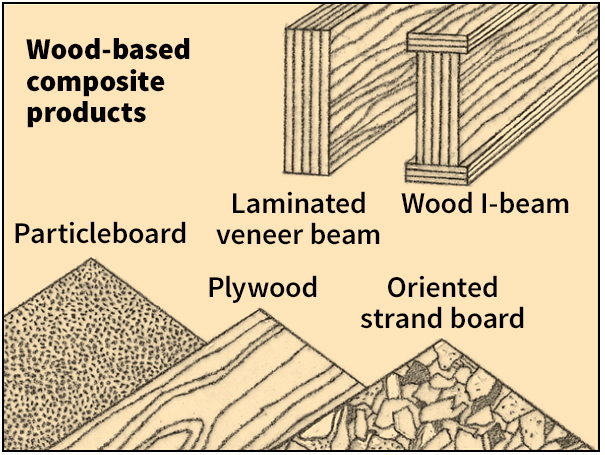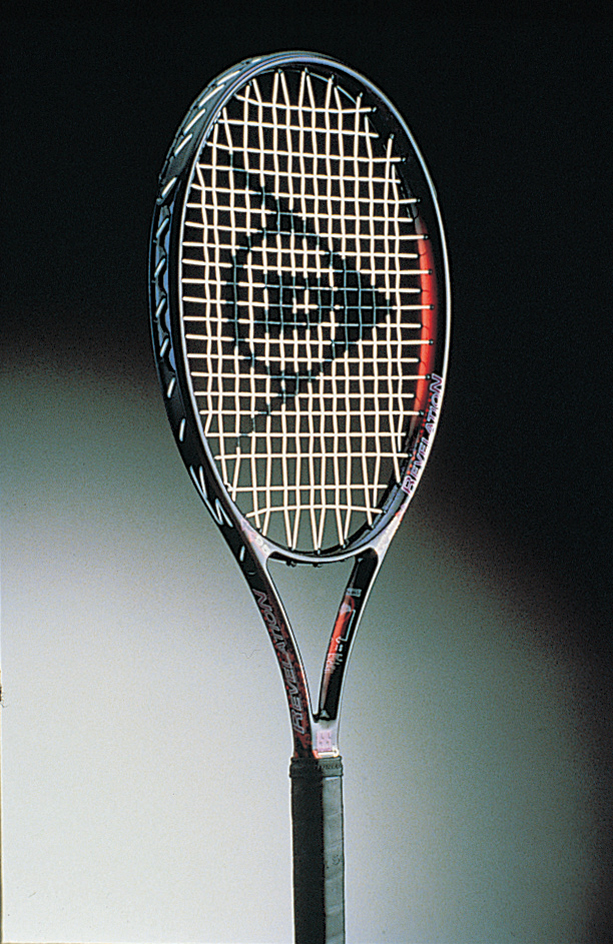Composite materials are solid substances made up of at least two distinct ingredients, one embedded within the other. The embedded material, called the reinforcement, gives strength to the composite. The surrounding material, called the matrix, holds the composite together and gives it shape. A composite may include more than one reinforcement.

Reinforcements may be fibers or particulates (tiny particles). Fibers may be long or short, and they may be in single strands; bunched or matted together; or woven, knitted, or braided. Reinforcements are manufactured from such materials as boron, carbon, ceramics, glass, and plastics. The matrix is a solid body with adhesive properties. Common matrix materials include synthetic resins (chemical compounds used to make plastic products), glass, ceramics, and various metals.
Engineers use various combinations of reinforcement materials, forms of reinforcement, and matrix materials to produce composites with specific properties (characteristics). The ability of composites to satisfy special requirements gives them an important advantage over raw materials whose properties cannot be changed chemically. This ability enables engineers to develop, for example, a material that meets specific requirements for both weight and resistance to corrosion.
Polymer composites.
The most widely used composites consist of fibers in a polymer matrix—that is, a matrix of synthetic resins. Synthetic resins are made up of long chains of molecules called polymers. Such composites include glass-fiber reinforcement in a polyester matrix and graphite fibers in an epoxy matrix. Carbon and epoxy form a strong, lightweight composite that is used to make tennis rackets, fishing rods, golf clubs, bicycle frames, and other sports equipment. Polymer composites are also used to make parts for aircraft, automobiles, high-speed trains, boat hulls, medical appliances, and industrial machinery.
Manufacturers produce polymer composite parts in several ways. For example, they may mix short fibers with a polymer liquid and squirt the mixture under pressure into a mold called a die. Or they may place mats of reinforcement in a die and fill the cavity with liquid resin, which solidifies around the mats. Tough composite parts may use braided filaments (continuous fibers) as the reinforcement. Or they may be manufactured using filament winding, in which the fibers are coated with a polymer and wound around a rotating cylinder called a mandrel to create a hollow structure. The mandrel is removed after the polymer solidifies.
Hybrid composites
combine different fibers—such as carbon and aramid, a type of synthetic fiber—in the same matrix. Engineers can vary the length and orientation of the fibers in different areas of a product. For example, they can use expensive, high-strength fibers in critical areas and cheaper, lower-strength fibers in areas that will experience little stress.

Other composites.
Manufacturers make some automobile engines and parts for racing bicycles from metal-matrix composites. Ceramic-matrix composites are used to make some cutting tools.
